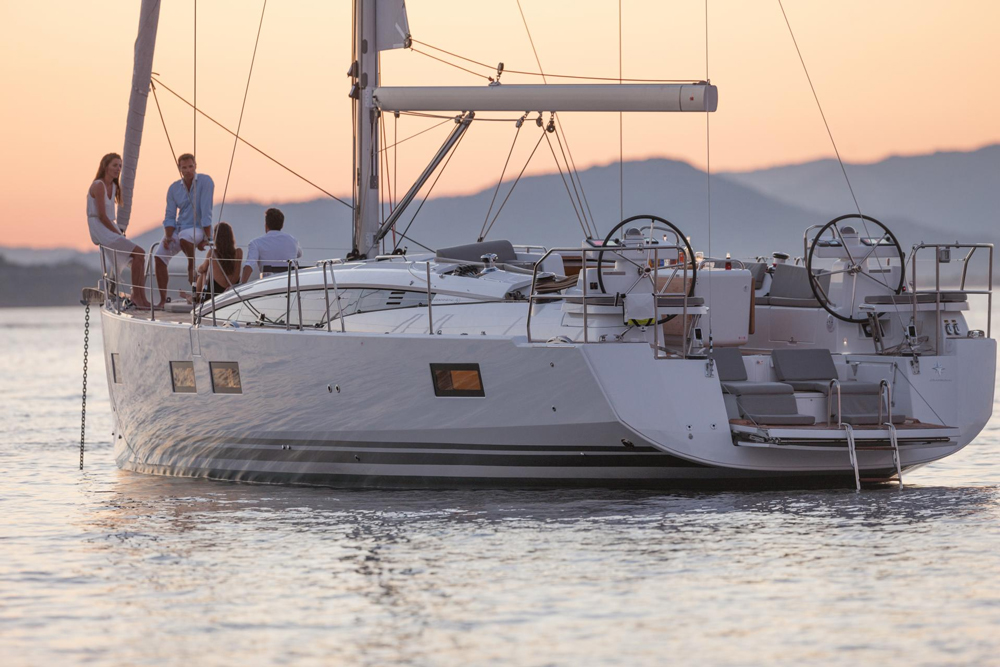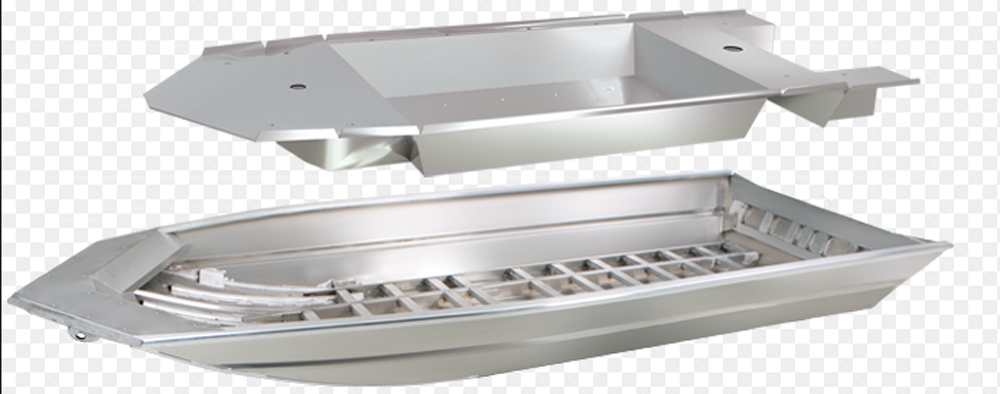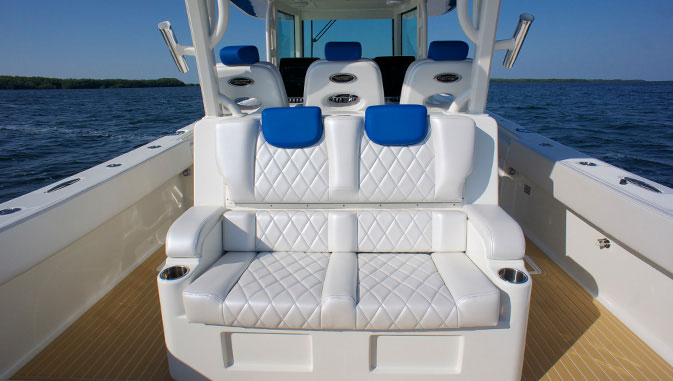Buying a New Boat
Is a new boat in your future? We have the know-how and info you need to make it happen.
When it comes to choosing a boat to buy you’ll find all the advice you need in How to Buy a Boat: Tips for a First Time Buyer, but when it comes to the actual purchase of a new boat, there’s a completely different set of information you should have at hand. And no, buying a new boat is most decidedly not like buying a new car. Why? Well, consider the following aspects of purchasing a brand-new boat:
- Fiberglass construction technique are not standardized and can vary quite a bit from one boat-builder to another.
- New boat warranties range from useless to spectacular.
- How you choose to have a new boat outfitted will significantly affect its value down the line, and how easy or hard it may be to re-sell in few years.
- The dealer you buy from is likely to make a huge difference in how happy you are a few years down the line.
- Financing a new boat is significantly different (and more difficult) than financing a new car.

Are you ready to take the plunge and purchase a new boat? Before you decide, there are some important factors you should consider...
Before we delve into each of these factors, however, we need to address that age-old boat-buying question: should you really buy a new boat, when a used boat will cost a lot less and might possibly work just as well for you?
New Boats vs. Used Boats
Every boater on the face of the planet has struggled with this question. The reality of the matter is that economically speaking, it’s no contest. Boats devalue immensely the moment they leave the dealership, sometimes to the tune of 20- to 30-percent. That’s a massive hit to take, and an excellent logical argument to buy a used boat. There’s just one problem: there’s nothing logical about buying a boat in the first place. If we wanted to do the economically “smart” thing, we’d take up badminton or basket weaving instead of boating. We buy boats because we love boats, and buying a new boat is simply more attractive than buying someone else’s old boat.
Leaving the money issues aside, buying a new boat gives you to ability to choose exactly how it’s outfitted. You will know from day one how high the engines have revved, and how often the oil was changed. And if you’ve purchased a boat with a substantial warranty (more on this later) you’ll have some protection in case something goes wrong.
Buying a used boat, on the other hand, can be fraught with danger. You have no way of knowing how hard the original owner ran the boat, how well it was cared for, and how well it was maintained. Many problems can remain hidden from the eye and even with a professional survey, there’s no guarantee of how the boat will hold up in the future. If a used boat is a possibility, we’d recommend a careful read of Boat Buyers Beware: 10 Hidden Problems to Look For.
Considering all of the above, deciding whether to buy new or buy used is a personal decision. Different people have different priorities, economic constraints, and concerns. If you do decide to buy a new boat, however, considering the factors we noted earlier is important—so let’s look at each in a bit more detail.

When thinking about buying a new boat, one of the first things to think about is boat construction.
New Boat Construction
Fiberglass boat construction is constantly changing, evolving, and progressing. At any given time, the following issues may be of concern and should be taken into consideration by any and every new boat buyer:
The Use of Wood: Many people would argue that wood is an excellent boat-building material. And they’d be right. Whenever wood is used, however, there is the danger of rot. What’s important for a new boat buyer to understand is that a high-end builder which has been using wood for decades is likely to use wood in such a way as to harness its benefits (good strength, screw retention, and stiffness) while minimizing its weakness (potential rot). When you see wood being used by a low-grade builder or a new builder, on the other hand, a bit of caution is warranted.
The Application of Vacuum Molding: There are several different varieties of vacuum-assisted fiberglass boat molding techniques, ranging from vacuum-bagging to resin infusion to VARTM (vacuum-assisted resin transfer molding). Each of these methods is, generally speaking, superior to open mold hand-laid or chopper-gunned fiberglass molding techniques. The use of a vacuum allows for a much more precise measurement of the resin being used, minimizing excess weight without giving up any strength. Additionally, most vacuum-assisted techniques are more environmentally-friendly than open molding techniques. If you don’t understand how vacuum molding works, watch our Boating Tips: Understanding Vacuum Bagging video.
The Type of Hull to Deck Joint: Different builders use different hull to deck joints, and most have been proven over time. It’s important, however, to make sure hull to deck joints are sealed (usually with an adhesive-sealant, like Plexus or 3M 5200). Through-bolts are superior to screws, and the closer the mechanical fasteners are to one another, the better. A hull to deck joint that’s fiberglassed shut 360-degrees around the perimeter of the boat can’t be beat. Watch Boating Tips: What to Look for in Hull to Deck Joints, to learn more.
Resin, Fiberglass, and Core Materials: Obviously, there’s quite a bit of variation between different types of resins, fiberglass cloths, and core materials. Too many, in fact, to list them all out here. To get the full scoop, however, all you have to do is read Basic Boat Construction: Resin, Fiberglass, and Cores.
New Boat Warranties
New boats are a bit odd in that the warranties they come with vary radically. Unlike the automobiles, appliances, or consumer electronics, there really are no industry standards. As a result, warranties can vary from utterly useless to splendidly spectacular.
One key points to look for is “stem to stern” coverage, which means the warranty applies to the boat itself, the powerplant(s), and the accessories (such as stereo systems, pumps and plumbing, electronics, and more). These warranties are unusual, and often only last for a year or two. If you see a boat with three-year or longer stem to stern coverage, consider this a premium feature.
Some other warranties you see cover the boat only, for flaws or defects in manufacturing. Although that’s not nearly as comprehensive as stem to stern coverage it is still valuable. Fiberglass manufacturing flaws are relatively common, and can lead to a number of problems (especially cracks in the gel coat), that you’ll want to have coverage for.
Look out for warranties that explicitly cover the hull only. Few modern boats are built so poorly that the hull is in any danger of failing, and a hull-only warranty isn’t worth much to the average consumer.
You may see many levels of mixed warranties, including any or all of the above. It’s fairly common, for example, to see a manufacturer offer a decade or more of coverage on the hull, two or three years on the entire boat, and 12 months of stem-to-stern coverage. Note, however, that in many cases the engine(s) and/or accessories may be covered separately, by their manufacturers. Even if you only have hull coverage, for example, the manufacturer of the stereo on your boat may offer three years of coverage on that stereo alone. This mix-and-match approach can make it difficult to get service work done, since it may be unclear as to who is covering what, which is another reason why the stem to stern warranties are so attractive.

In terms of the outfitting and semi-customization of a new boat, the options are endless—buyers are able to choose from a variety of colors, interiors, layouts, electronics, onboard accessories, and much, much more.
Outfitting and Semi-Customization
Although plenty of boats are purchased “off the lot,” when compared to cars, a higher percentage are ordered to the customer’s exact specifications. That’s because unlike a car, the purchase of a boat is rarely a time-sensitive priority. So if you have some patience, you can have a boat more or less built semi-custom, to match your exact needs. But beware—there’s a potential pitfall, here, because how you choose to have a new boat outfitted will significantly affect its value down the line.
The biggest danger here is often in under-powering a boat. While you may feel that a 20 MPH cruise is plenty fast for a center console fishing boat, many other people will want to run across the bay at 30 MPH or more. If you order a boat with minimal power, when you go to sell it a few years later you may find that it takes longer and you have to accept a substantially lower price, because the pool of potential buyers is reduced (of course, we think you can reach the largest pool of potential buyers by listing your boat on boats.com).
Another potential problem arises when buyers don’t get very popular options that some other people will consider must-haves. On many larger modern powerboats, for example, people expect to find an electric grill and outdoor cooking facilities. You may not ever plan to prep a meal aboard, and may want to shave a bit off the boat’s price by eliminating this option. But in the long run, that could be a bad move. When you try to resell the boat years from now and people come to look at it, many will expect to see that grill and will be disappointed when they discover it isn’t there.
The solution to this issue is working with a dealership and a new boat salesman that you can trust. People in the industry have a lot of insight into critical options like these, and the salesman can tell you if 95-percent of the boats he or she sells have this or that. Which brings us to the topic of…

Galati Yacht Sales is just one example of the many dealerships and brokers who are ready and willing to help you make the new boat purchase of your dreams. Photo by Ed Kukla.
The Dealer You Buy From
The dealership you work with will have a huge impact on your ultimate satisfaction level with your new boat. Some early warranty work is normal, you’ll need maintenance service down the line, and you’re sure to come up with plenty of questions about your new boat during the first season or two. We’re going to be right up-front about this one, folks: some boat dealers are far better than others. And unfortunately, we have no way of helping you vet the dealerships you may be working with. All we can advise is that you spend some time with your salesman or dealer and try to get to know them a bit, before you sign on the dotted line.
Financing a New Boat
We have some good news and some bad news for you, on this topic. The good news is that it’s much easier (and less expensive) to finance a new boat than it is to finance a used boat. The bad news is that it’s significantly different (and more difficult) than financing a new car. To get more insight into financing a boat be sure to read Boat Loan Basics, as well as Boat Financing: 5 Options You Need to Know About.
So, are you now ready to go out and sign on the dotted line? We sure hope so—but before you buy a new boat (or even a used one) be sure to check out the many other helpful articles in our boats.com Boat Buyers Guide.












